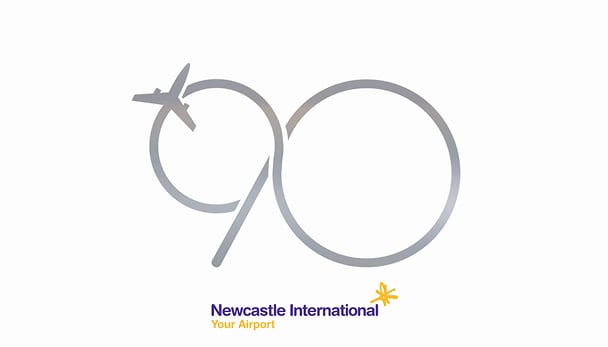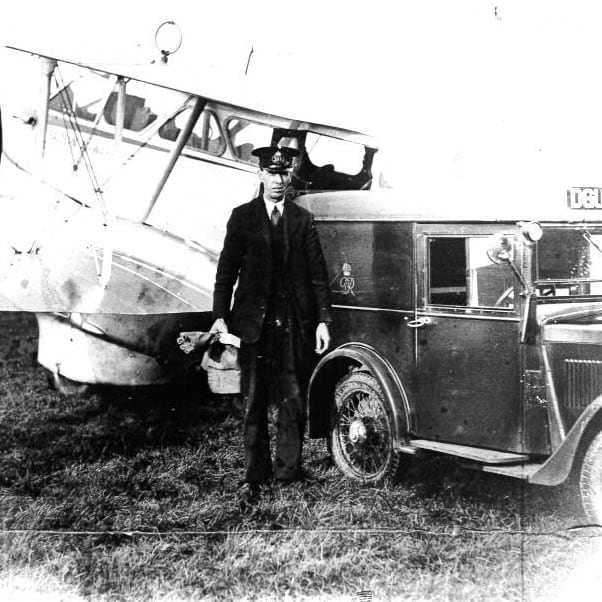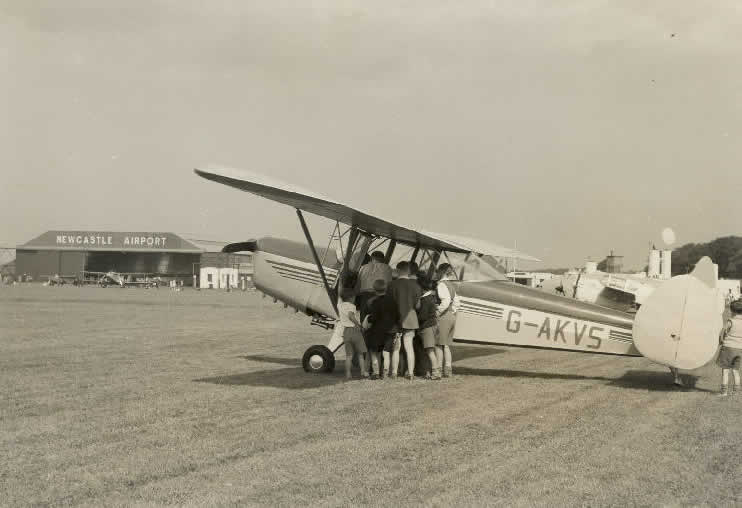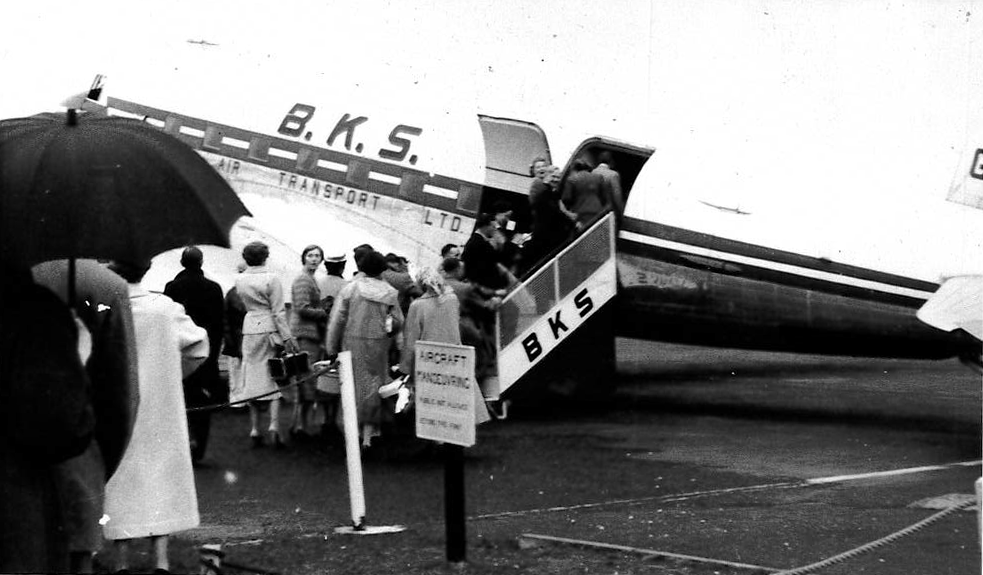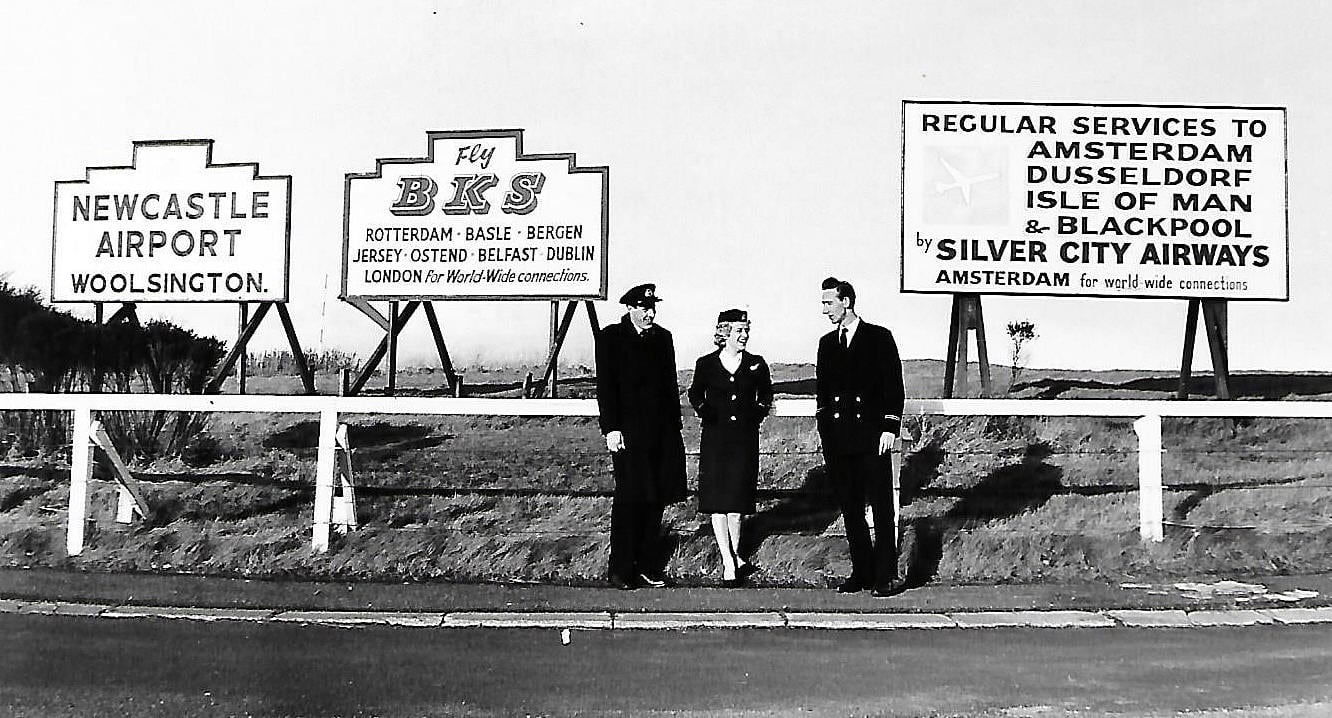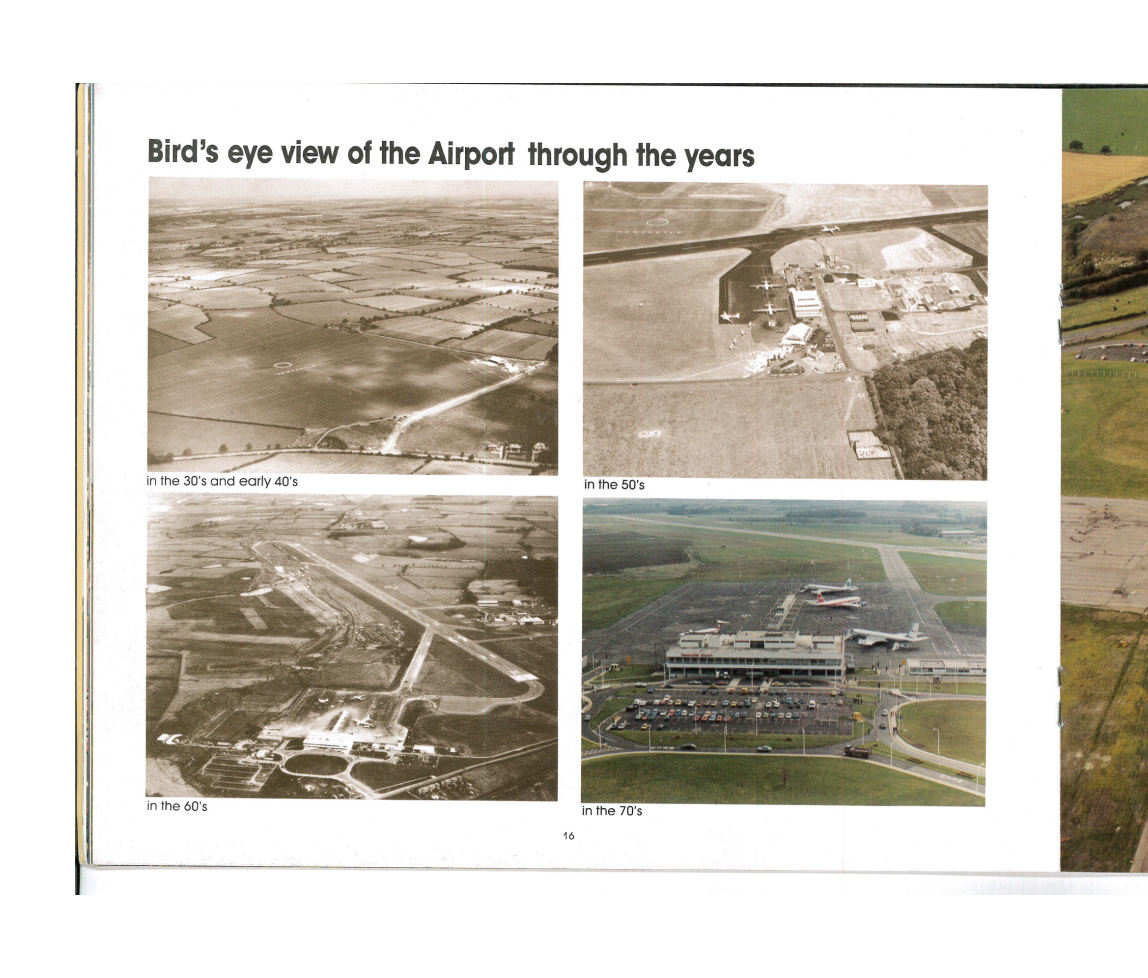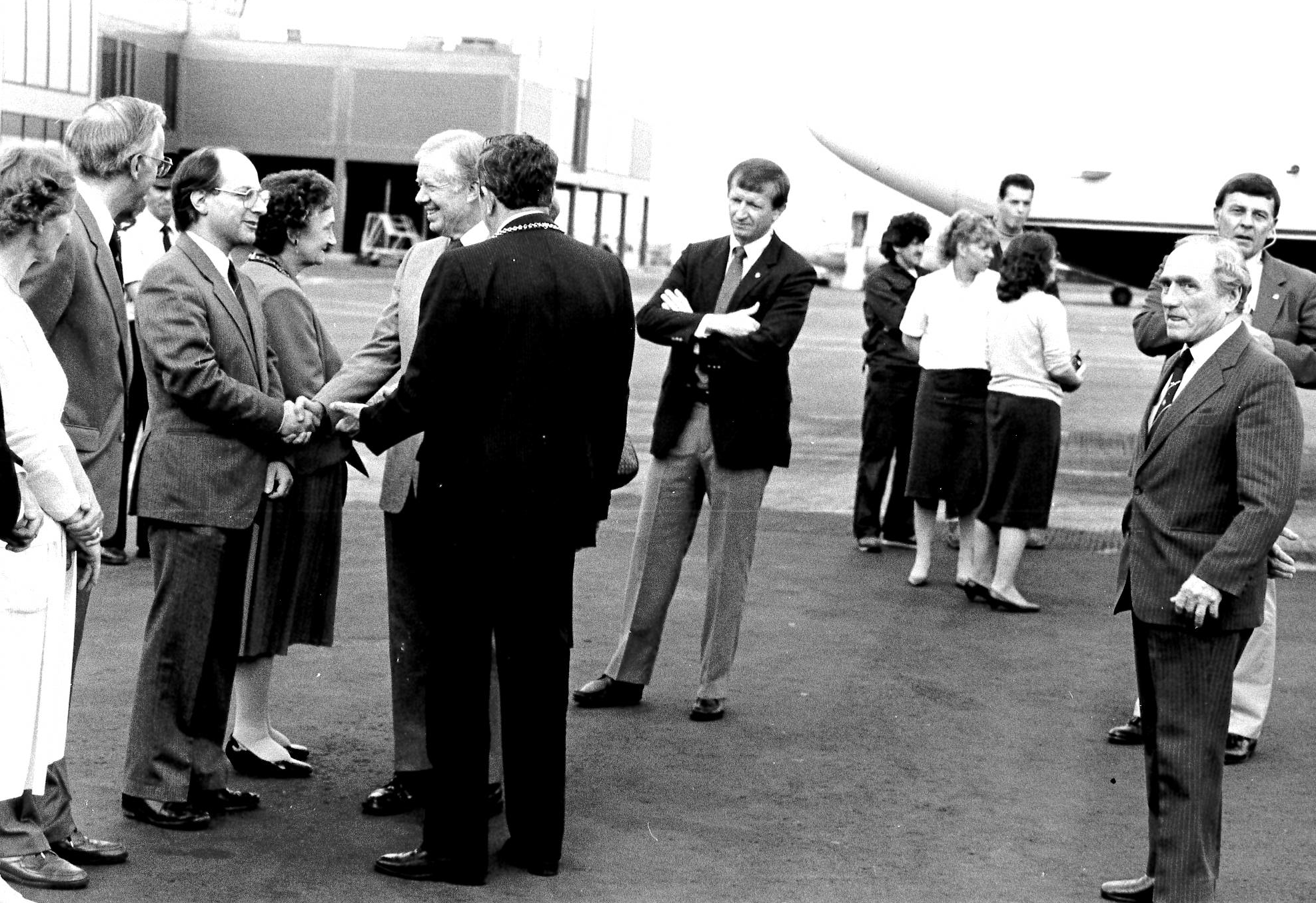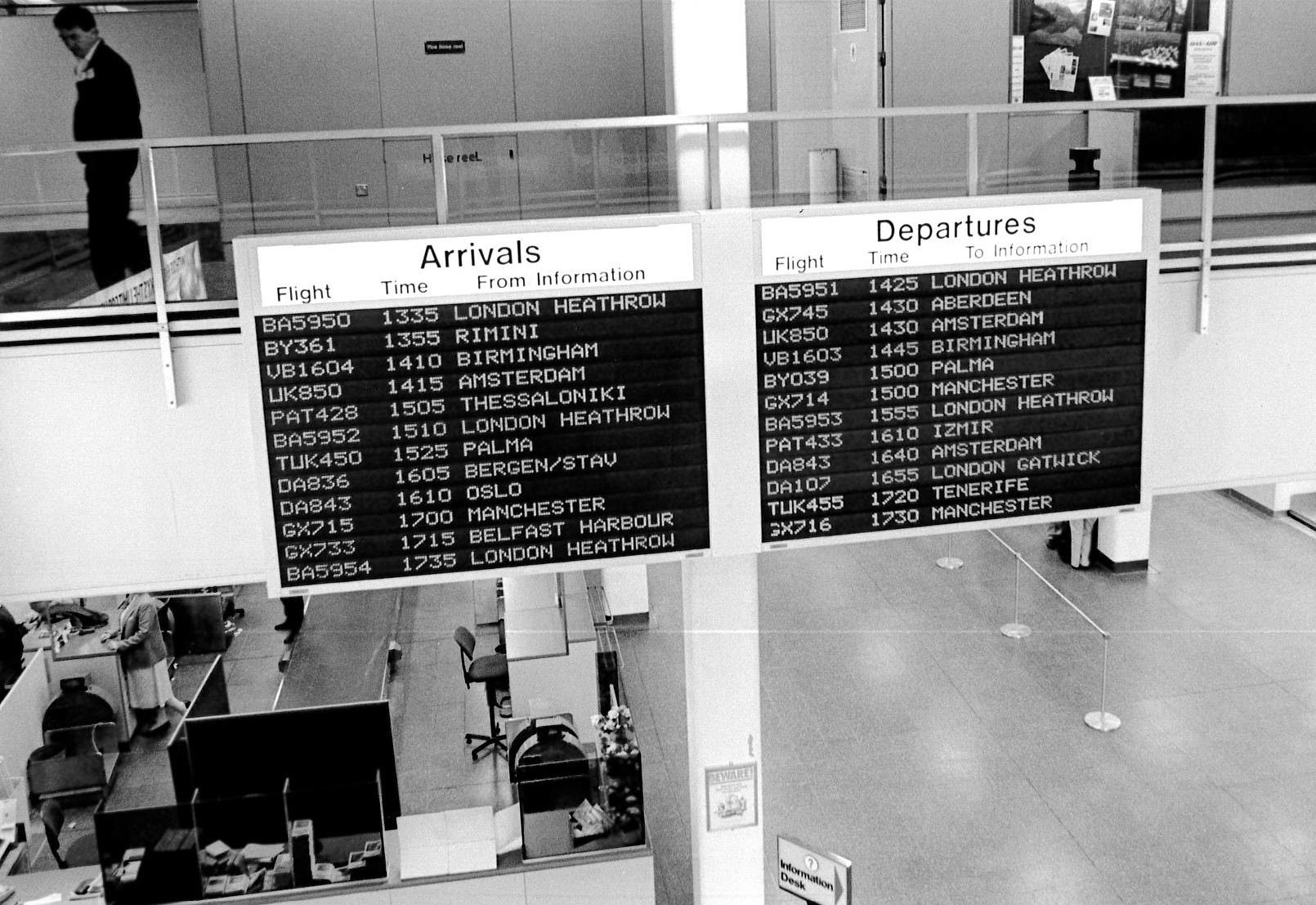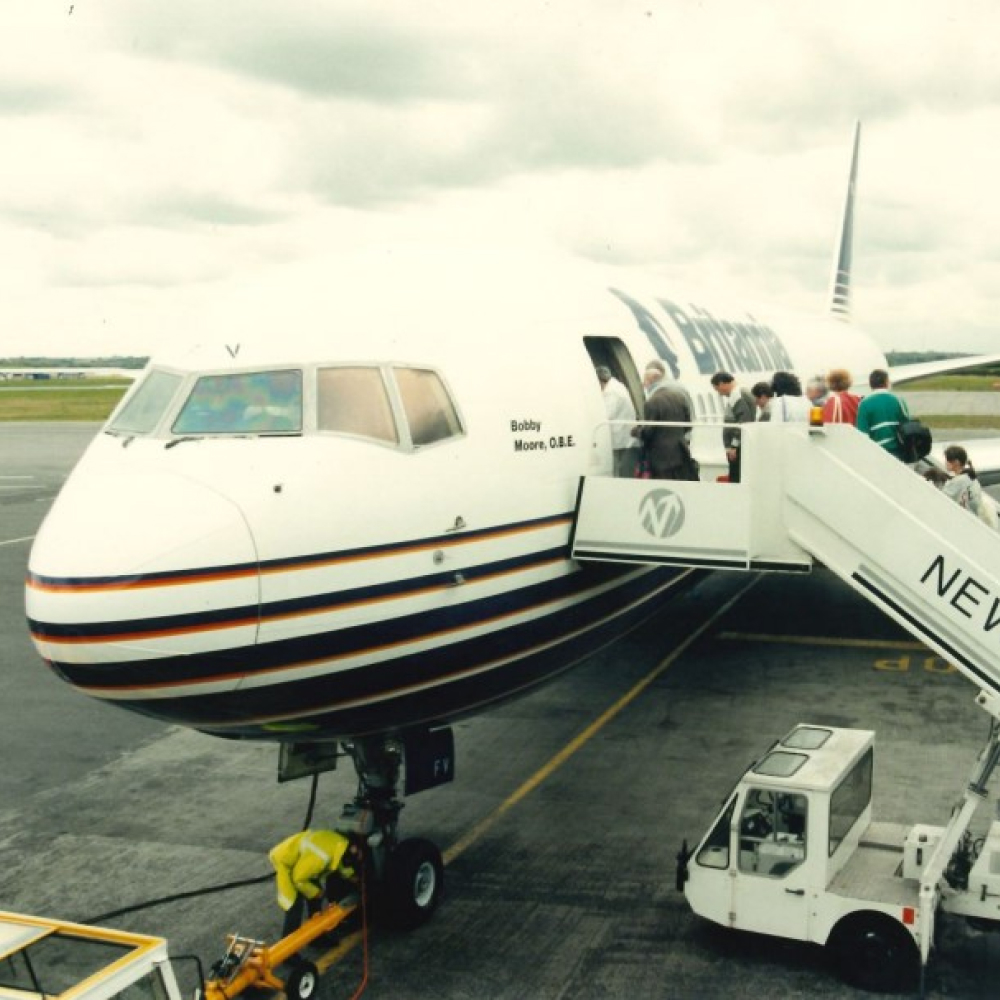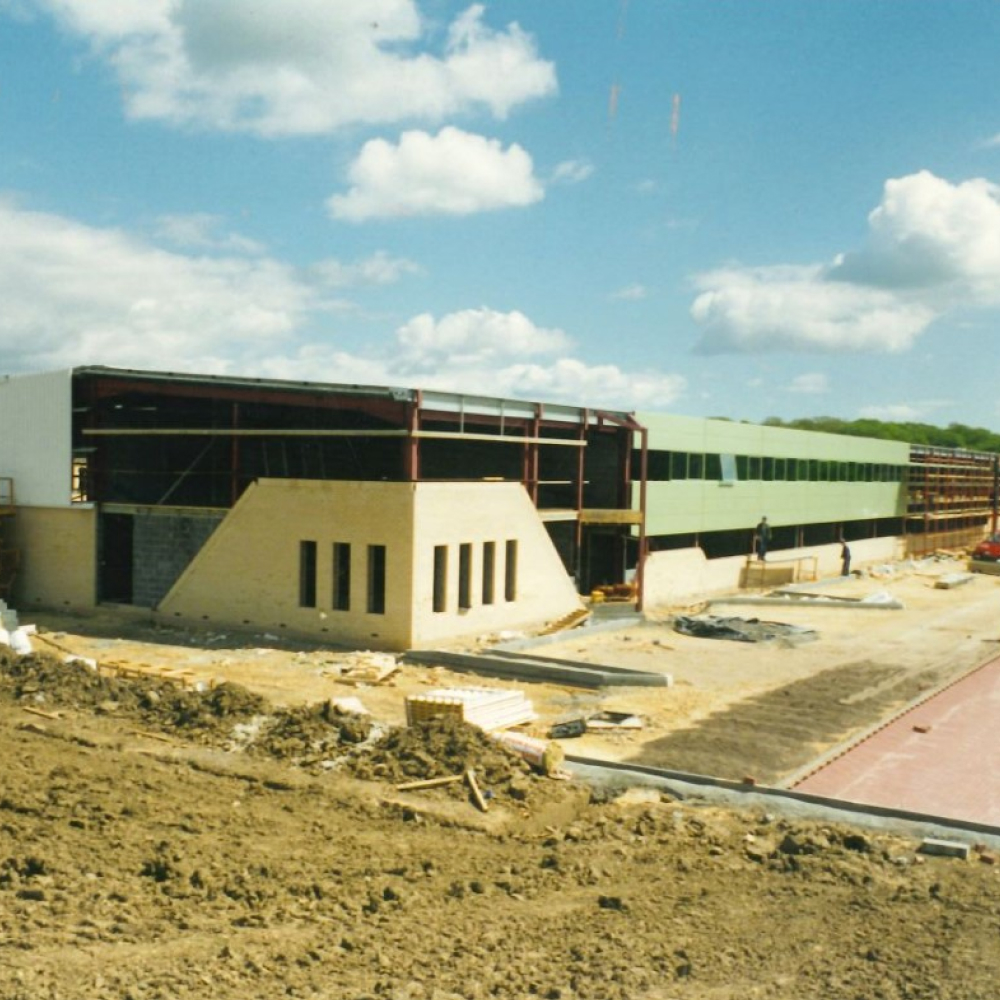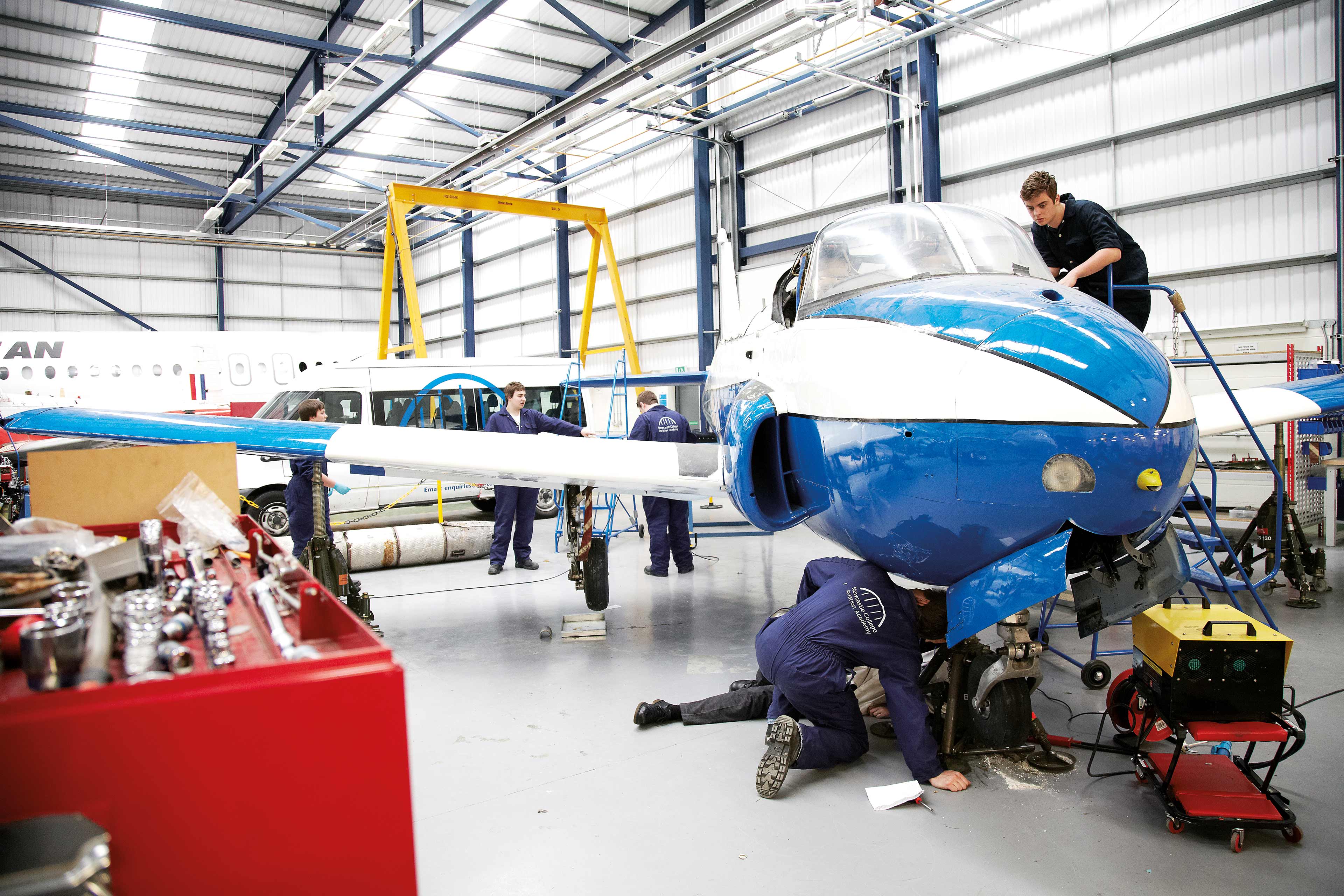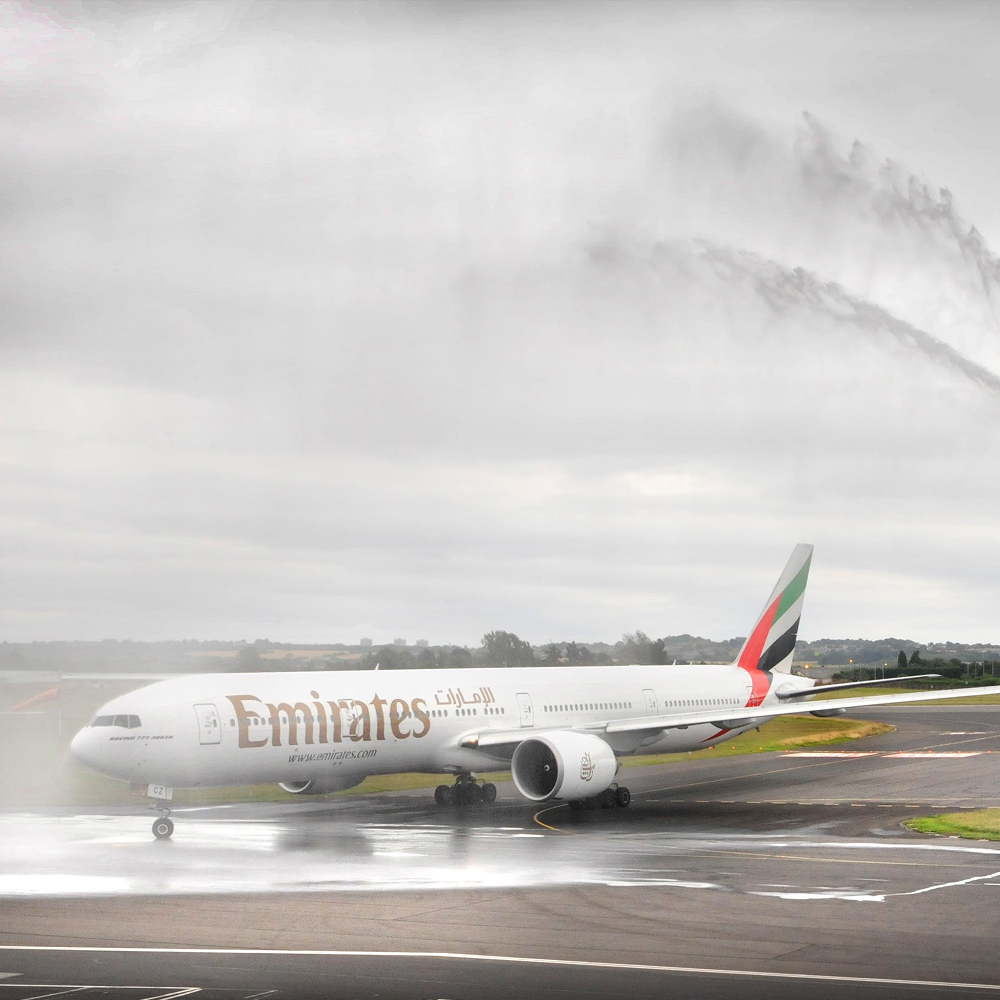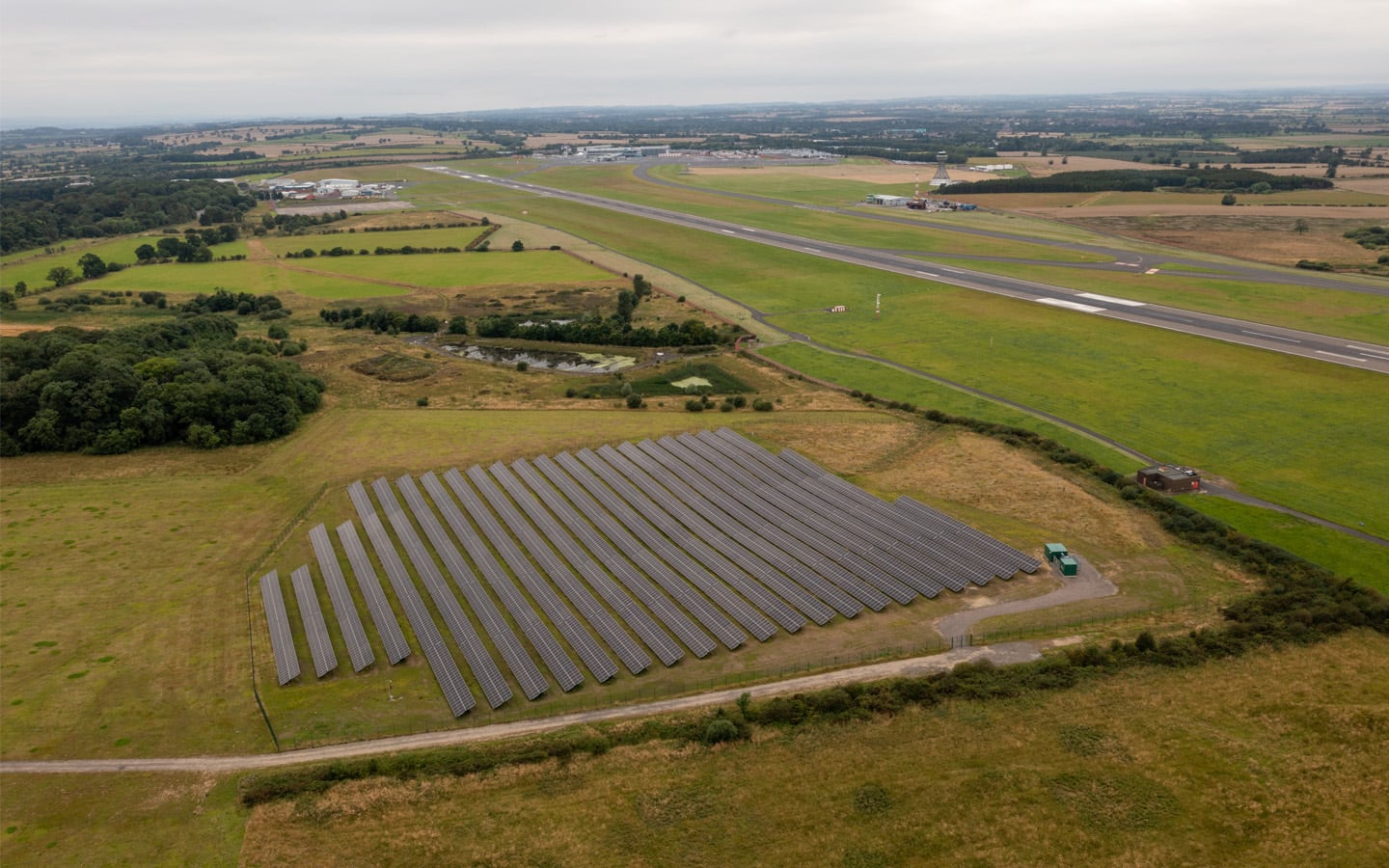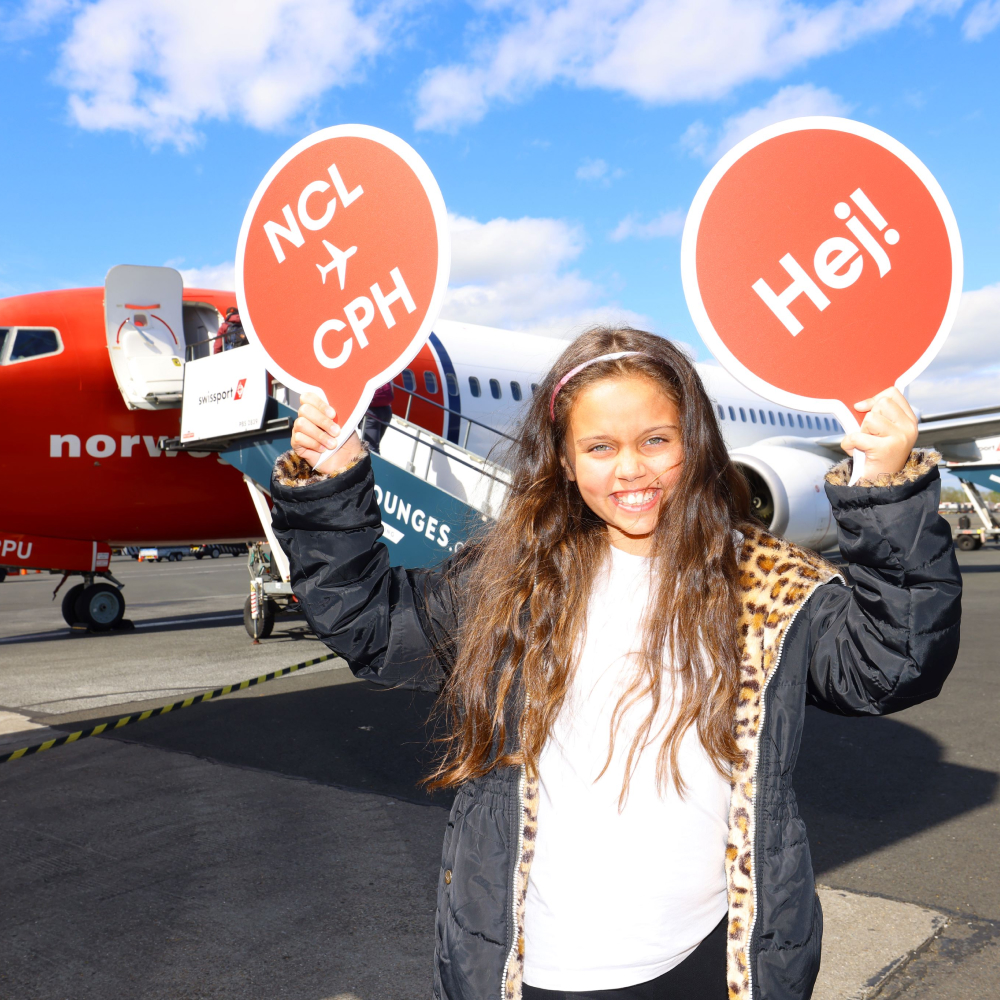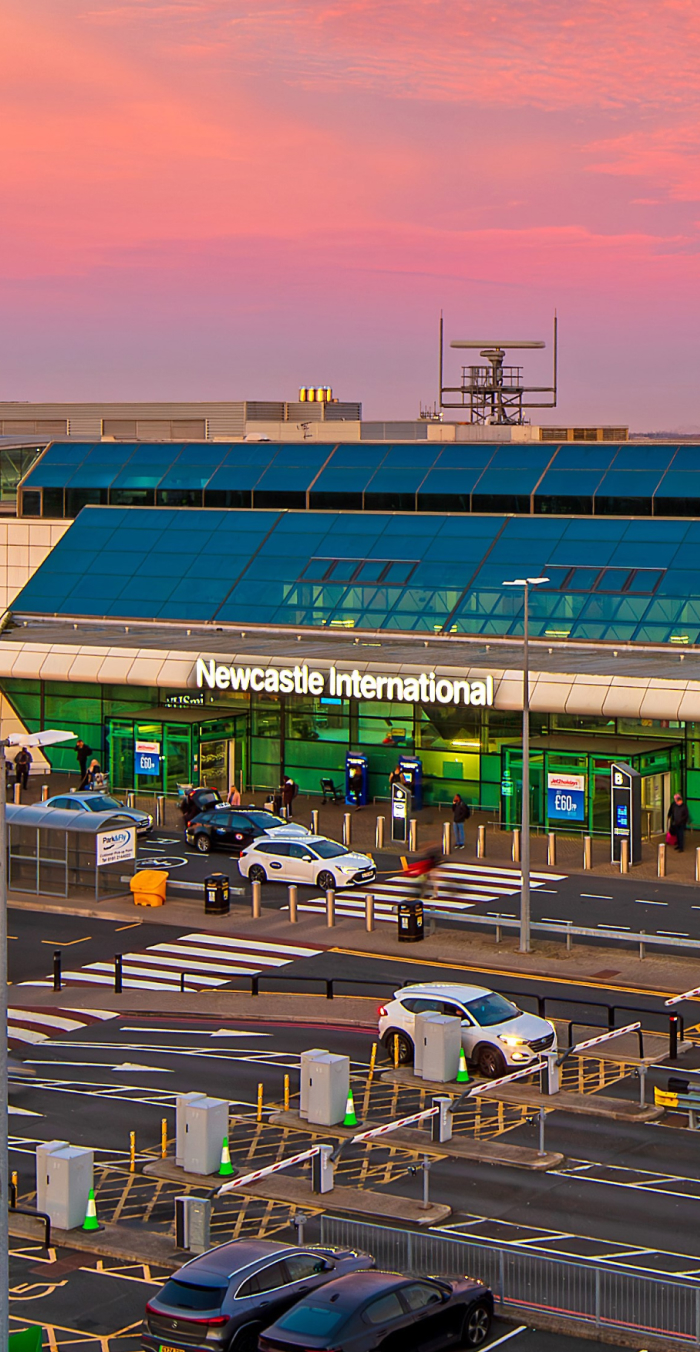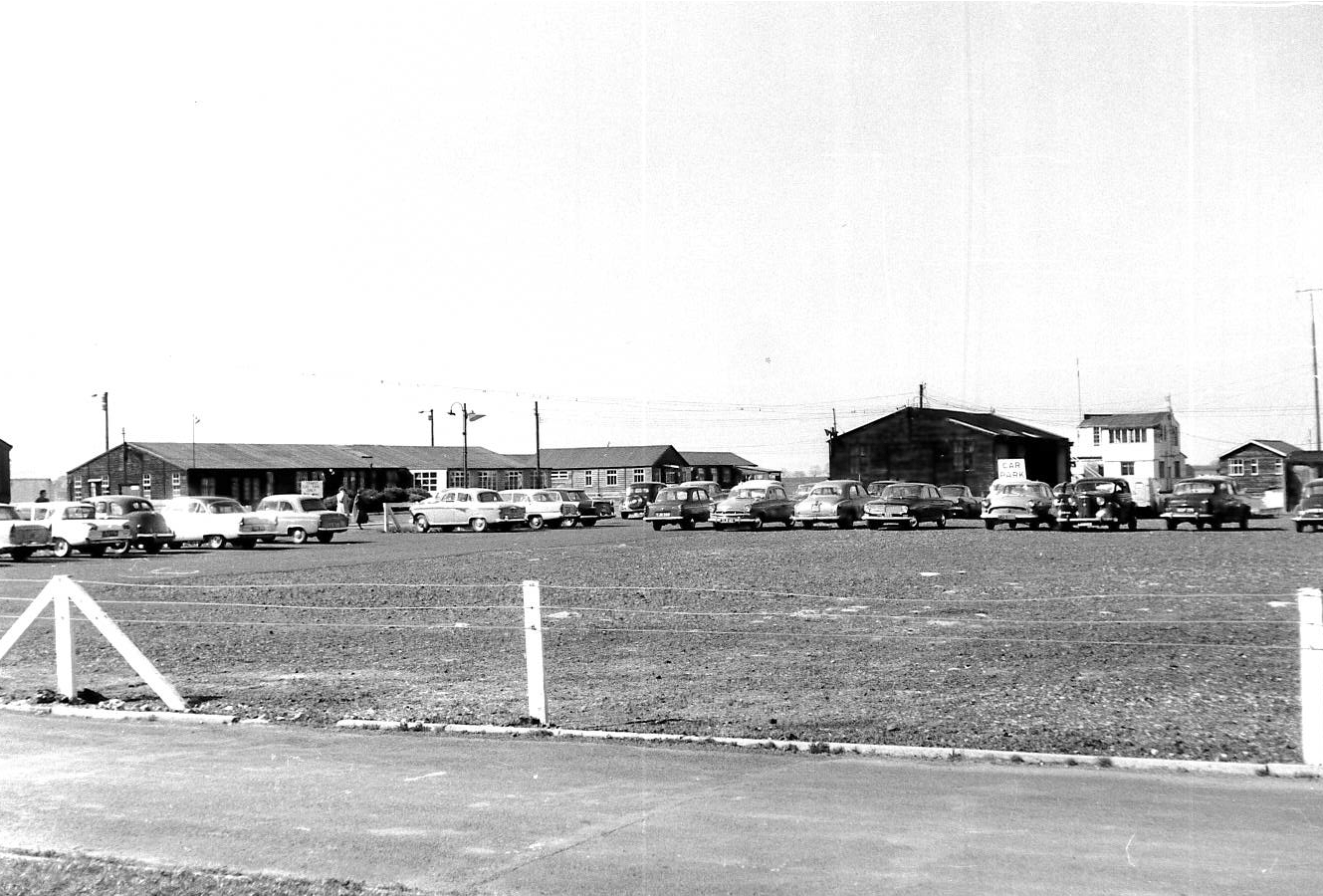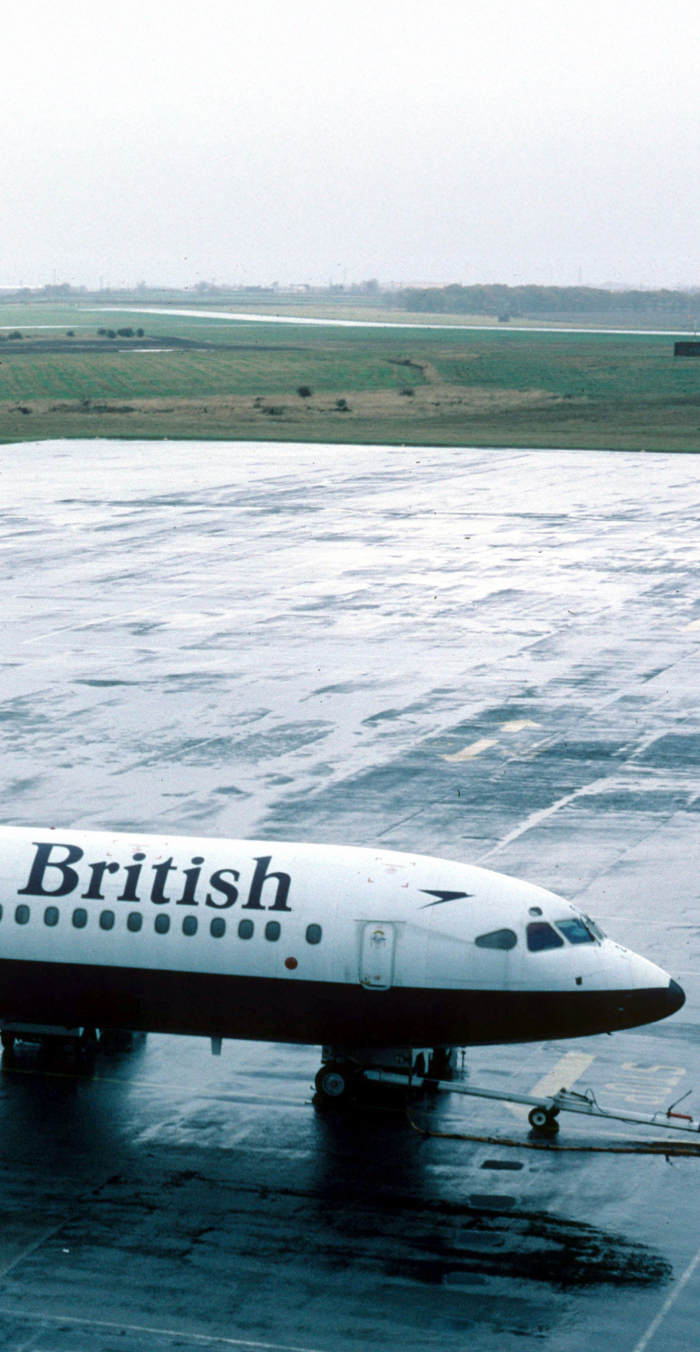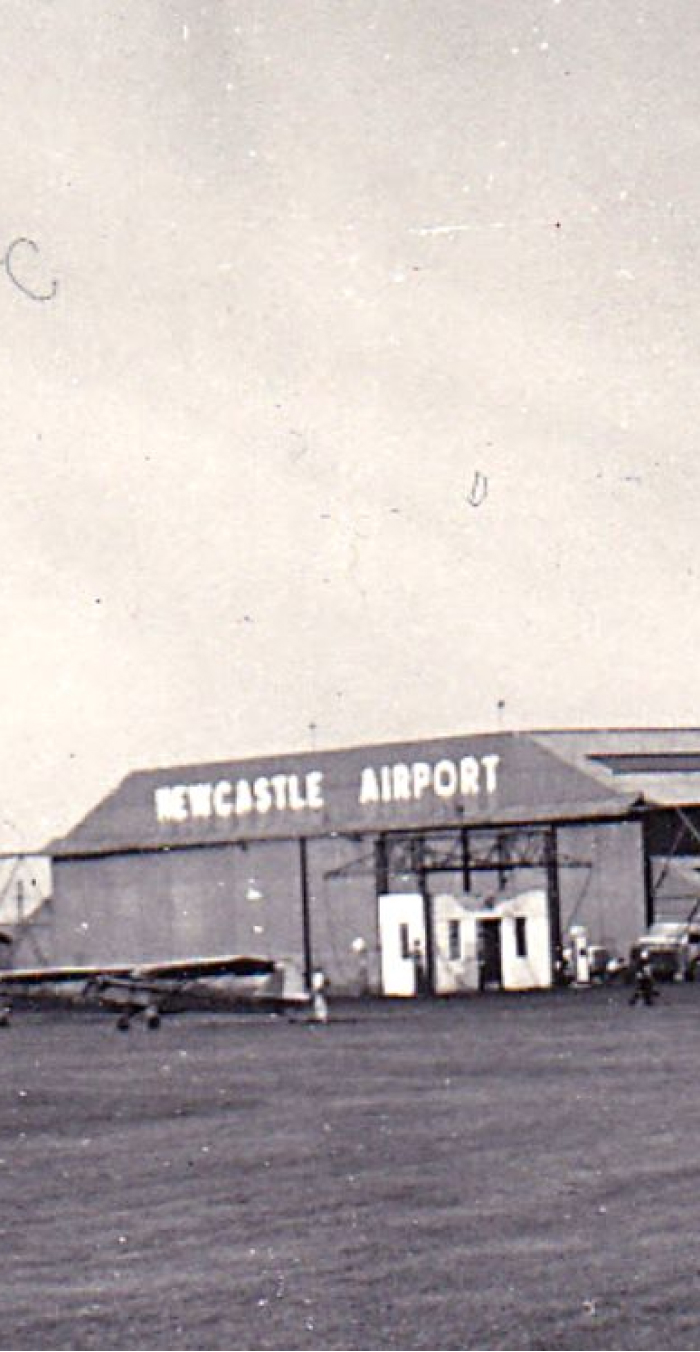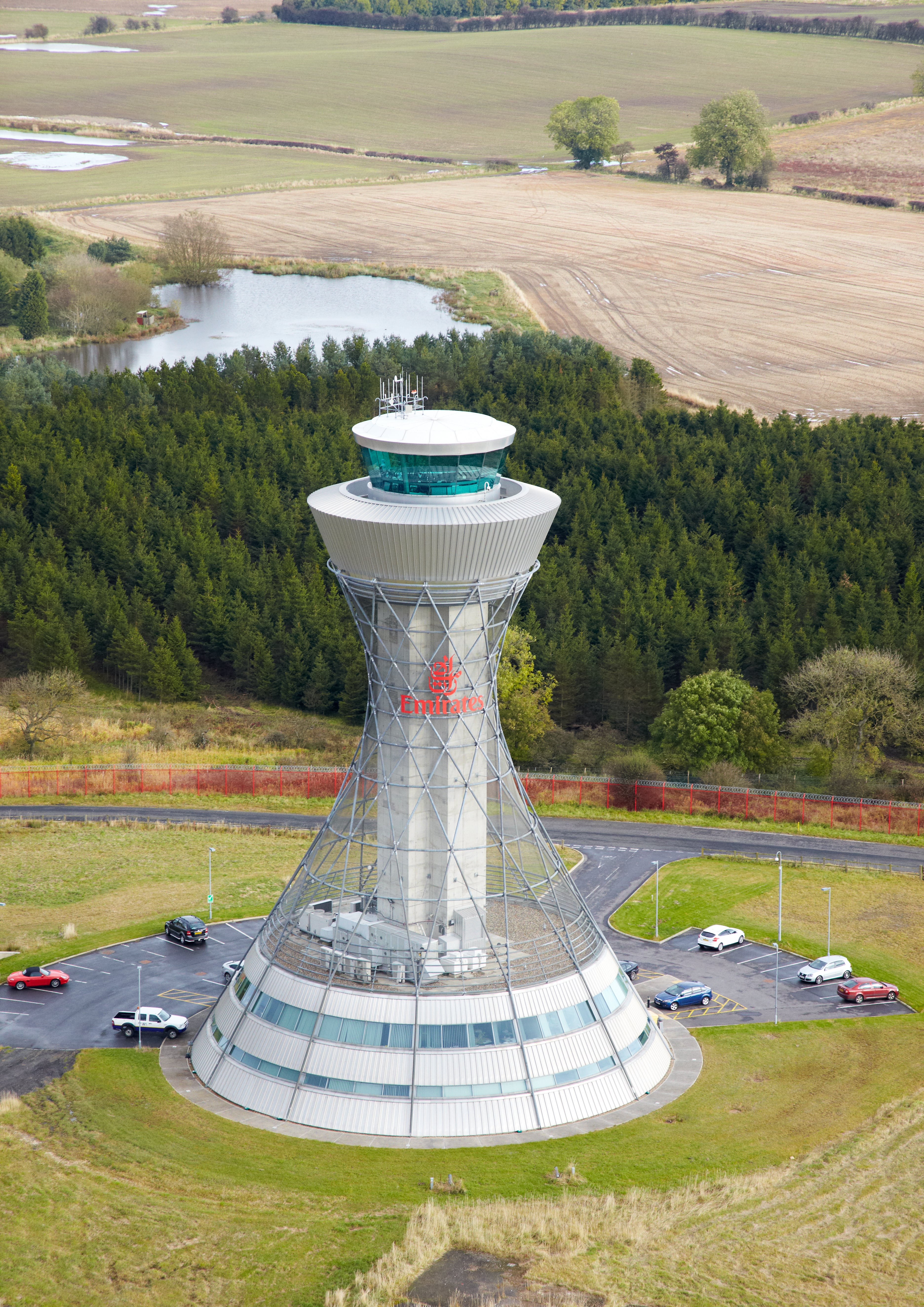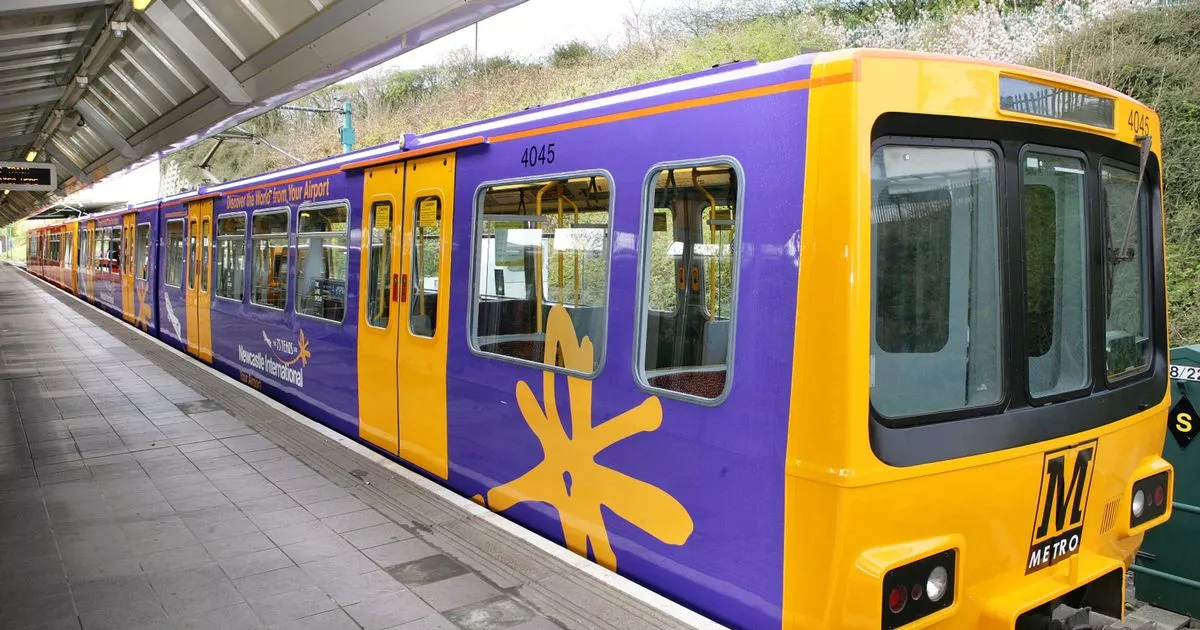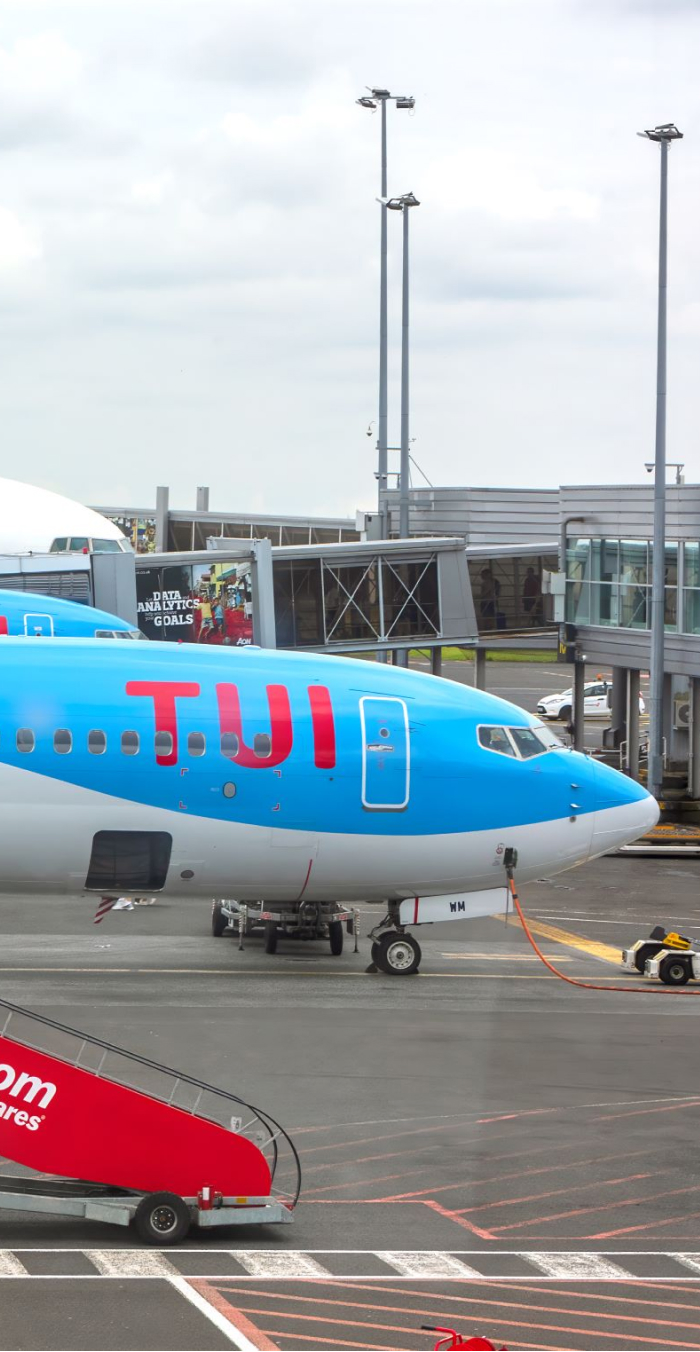Gateway to the World: 90 Years of Newcastle International Airport

On 26 July 1935 the Secretary of State for Air, Sir Philip Cunliffe-Lister opened Newcastle’s Municipal Airport, at that time a handful of buildings, one hangar and a single grass strip. Today, Newcastle International Airport is the 11th busiest in the UK, with over 3,200 people working on site and directly connecting North East England to over 80 destinations across the world. ‘Gateway to the World’ is a snapshot of the Airport’s history over the last 90 years. Happy Birthday Newcastle International Airport!
Gateway through the decades
From three huts and a strip of grass to a major regional Airport, our growth is pretty remarkable when you think about it.
1930s
Newcastle’s Municipal Airport officially opens on 26 July 1935.
Several sites were investigated around the North East before deciding on a location. Powered flight had only been possible for 32 years, but it was about to take off big time for our region!
The grand opening of the Airport saw the RAF perform a “thrilling exhibition”. One pilot flew upside down only 50ft above the aerodrome, and there was a parachute descent by Miss Naomi Heron-Maxwell - Britain's only female parachutist.
In his opening speech, Sir Phillip Cunliffe-Lister, Secretary of State for Air, said of the Airport “You have done a service to your city and your district in the future.” He wasn’t wrong.
Soon after the Airport opened, North Eastern Airways launched the first scheduled service to London. Using an 8-seater aircraft they carried passengers and mail to and from the capital. One passenger observed “we flew so low we could see the fishermen in their boats on Dogger Bank!”
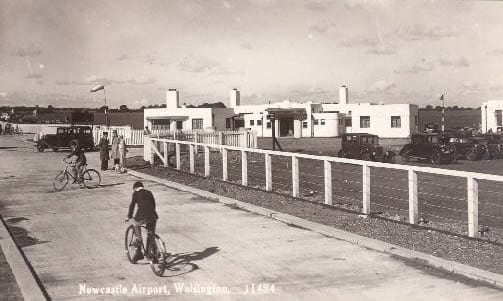
1940s
During WW2 the Airport was taken over by the Air Ministry to train pilots in the RAF Volunteer Reserve.
The outbreak of war meant that the development of the Airport and its scheduled services was set back by about ten years.
In 1946 the Airport was handed back to the Newcastle Corporation and was available for civilian use by 1947. Thanks to the RAF, it now had a few extra wooden huts and two tarmac landing strips, as well as a wooden control tower built on stilts and supported by sections of railway lines.
Once back in civilian hands, the Airport was run by former RAF instructor Dave Davico and Administrator Eileen O’Kane, reporting directly to the City Engineer. There were just 14 staff - quite different to the more than 3,200 staff employed on the Airport site today!

1950s
In 1952, after leaving the RAF to become a flying instructor, Jim Denyer was made manager of the Airport. He became the driving force behind the development of the Airport over his 37 years in charge and turned his hand to virtually every job in the building, from radar operator to painter!
The 1950s saw the beginning of package holidays, to places such as the Isle of Man, the Isle of Wight and the Channel Islands. Not exotic by today’s standards but pretty exciting at the time for North East adventurers.
By 1954 there were 35 scheduled services per week and passenger numbers had reached 5,500 per year. We were going to need a bigger Airport.
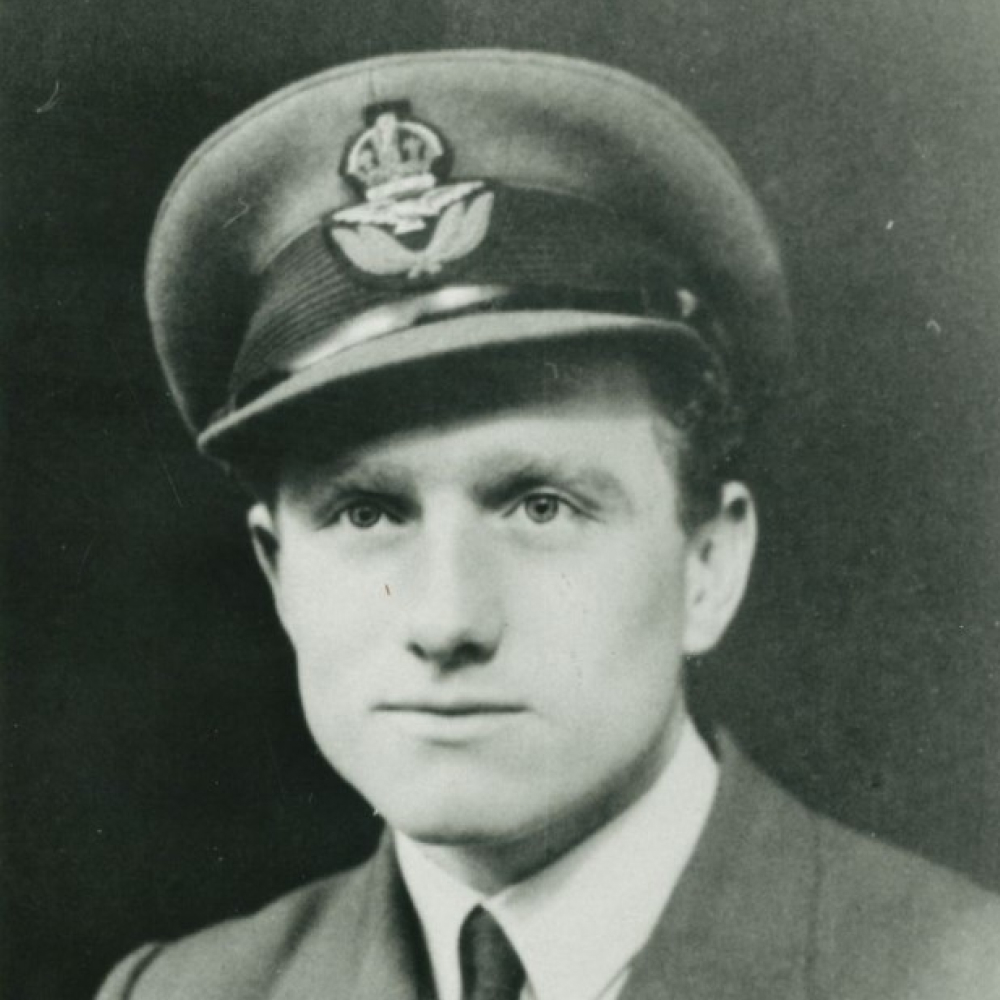
1960s
In 1963 the North-East Regional Airport Committee is formed. Comprising of the seven local authorities, it is a major catalyst to future success.
Construction of a longer runway, new terminal, control tower, cargo buildings and improved car parking was officially opened by Prime Minister Harold Wilson in 1967. He hailed it as the most modern Airport in Britain.
Jim Denyer, Airport Manager, continually pushed for better facilities and convinced more and more airlines to join, brought in by the reputation of the region and the treatment they received.
The new Airport was designed to last until the 1980s, but within 5 years it was feared it would be too small as passenger numbers kept rising faster than expected.
The Isle of Man was now seen as too ordinary – the North East passengers had discovered continental sunshine! The 1960s saw a boom in foreign sunshine holidays, especially to Spain. Larger and faster aircraft were becoming available, cutting down flight times and making it more appealing to fly abroad.
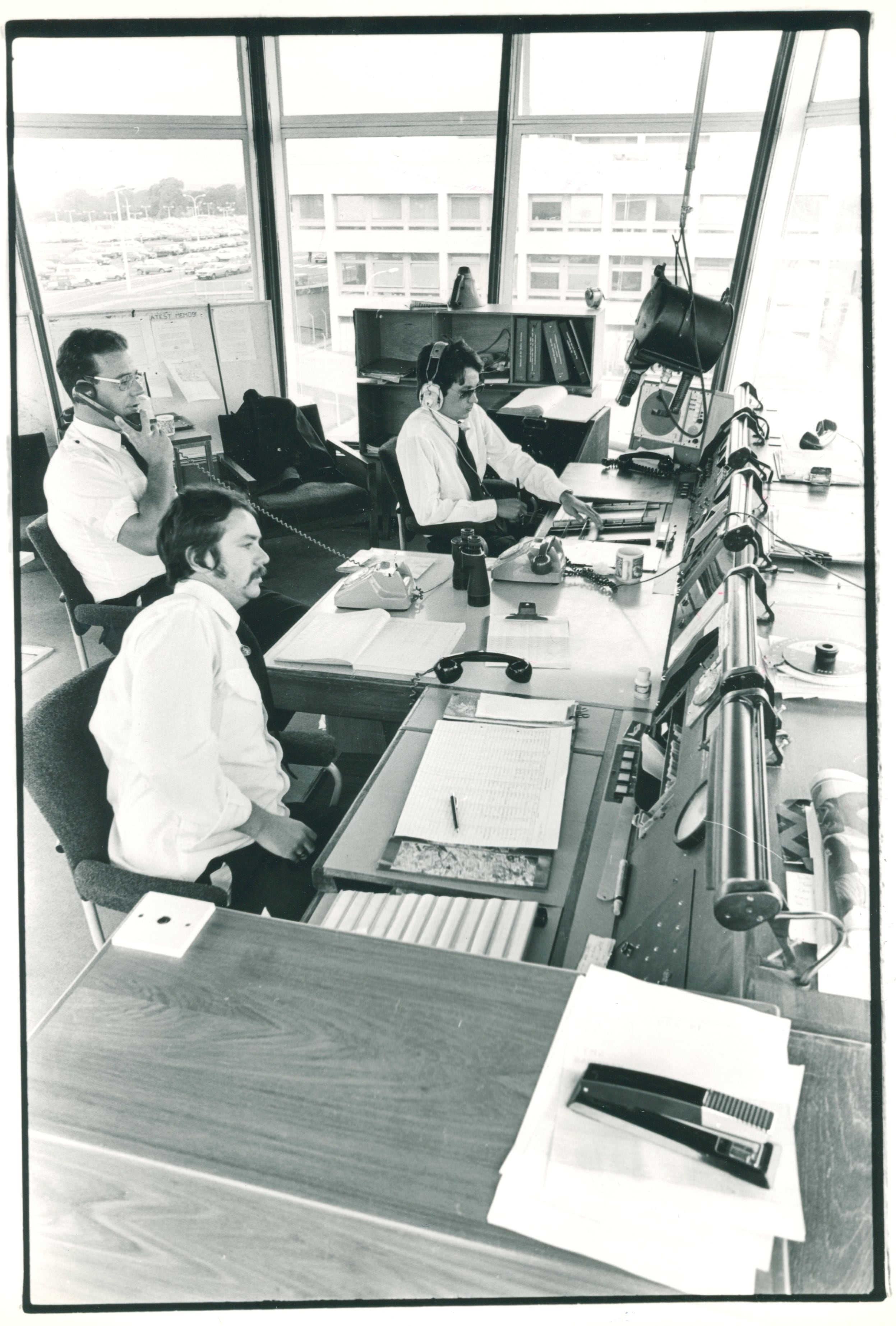
1970s
The 70s is often seen as the transformative decade that shaped the Airport’s future.
In April 1970 the first wide-bodied jumbo jet landed, ushering in a major expansion in package holidays.
To keep up with this, the Airport opened its first bank operating in foreign currency and travellers' cheques in June of that year.
By 1970 Newcastle Airport was the 9th busiest in the country and, in 1979, the company’s annual finances break even for the first time.
At the end of the 1960s the terminal began to strain at the seams with more and more travellers passing through its doors.
The Airport was looking ahead to the future and developed a plan for the next 20 years, including a longer runway, more carparks and new terminal buildings.
In 1977 the US President Jimmy Carter flew into the city. Crowds of thousands gave him a real Geordie welcome and he was offered the Freedom of the City.

1980s
1982 was another big year for the Airport. A new terminal building opened with improved check-in, lounges, catering and duty-free facilities. A new parallel taxiway was constructed to speed aircraft turnaround times and greatly simplify ground manoeuvres.
And all just in time for Newcastle’s first visit by Concorde, flown in by Geordie pilot Jock Lowe. Tens of thousands of people flocked to the Airport to see it gracefully glide in.
In 1984 KLM Royal Dutch Airlines became the first foreign carrier to operate flights from Newcastle Airport, 41 years later the airline still operates over 35 flights a week to Amsterdam and beyond from NCL!
In 1989 Jim Denyer, Airport Manager, retires after an impressive 37 years at the top. There were more than 80 applicants to replace him, but the role was eventually filled by the airport’s Finance Director, Trevor Went. Under Trevor Went’s stewardship, the Airport placed considerable emphasis on expanding its network of scheduled routes, both domestic and international. Towards the end of the decade passenger numbers had reached 1.6 million a year.
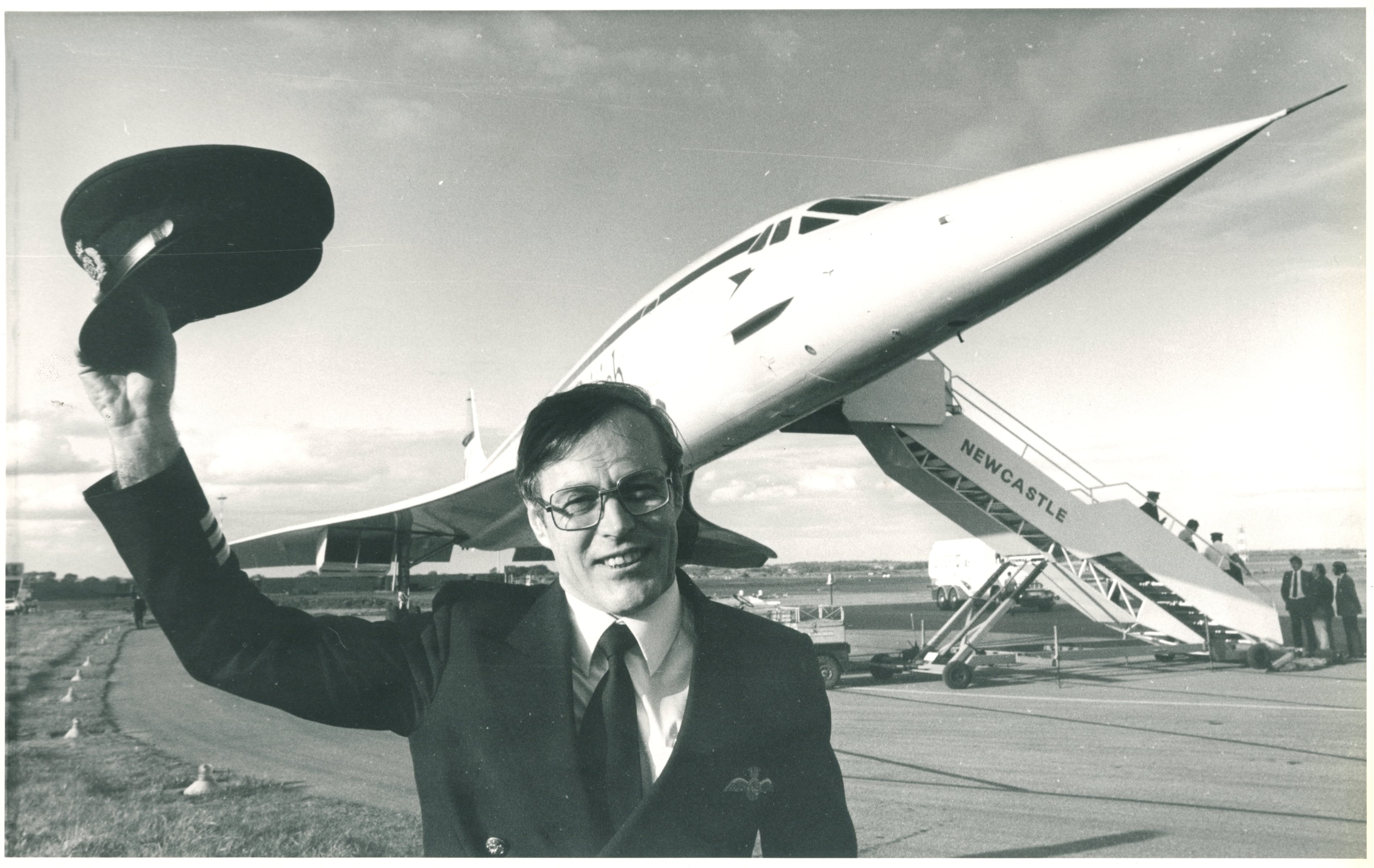
1990s
Two major developments meant it was now easier than ever to get to the Airport. In 1990 the A696 dual carriageway was completed, giving visitors direct access to the A1. Then in 1991 Nexus extended the Metro system, linking Newcastle Airport to the city and beyond. Back then, tickets only cost 90p, and a whopping 10,000 people hopped on board on opening day.
The 1990s was the decade of the long-haul journey. Britannia Airways, the country’s largest holiday airline at the time, based one of its 10 Boeing 767 jets at Newcastle. It could carry 282 passengers! Britannia would eventually be acquired by the TUI Group and become TUI Airways.
With a steady growth in domestic and international scheduled routes, the Airport could now boast flights to 50 destinations across 3 continents.
The 90s saw the addition of a new freight village. Freight had only been a small part of the Airport until now as traditional North-East industries such as coal and shipbuilding, didn’t lend themselves well to air travel. But Newcastle was now regarded as one of Europe’s most accessible Airports for cargo transportation.
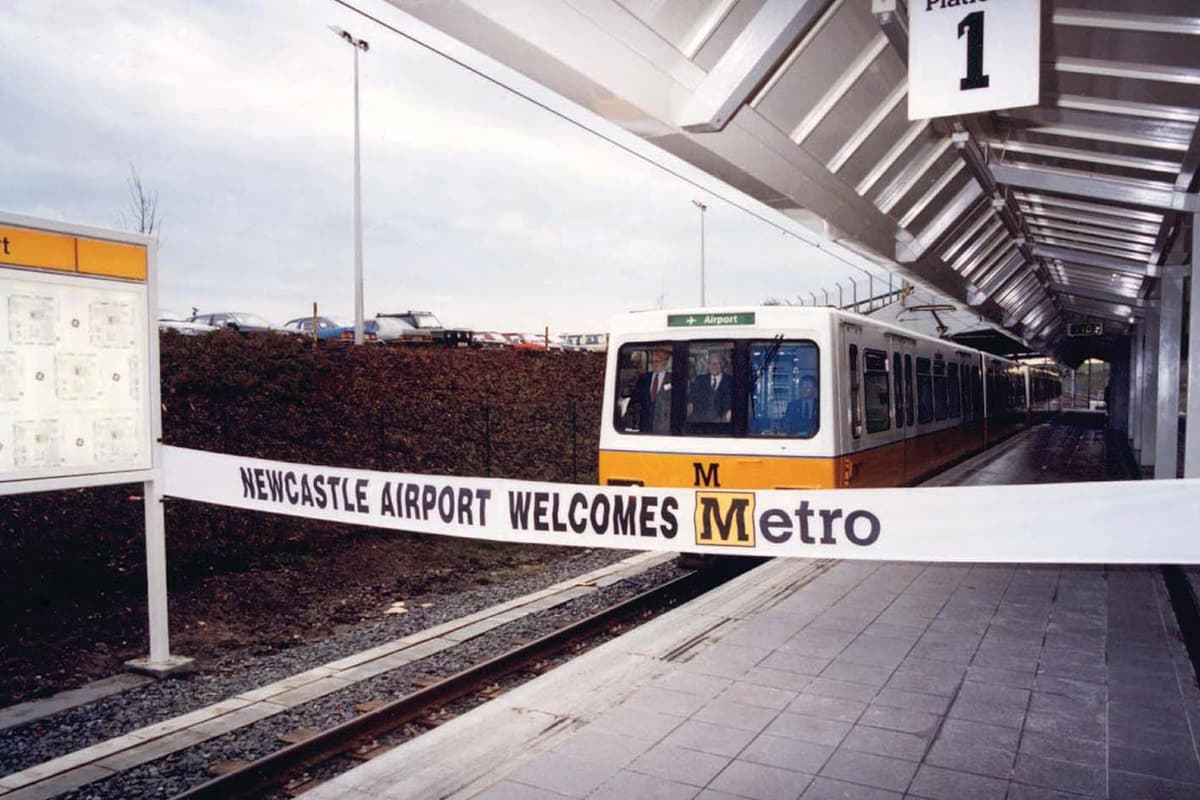
2000s
When easyJet arrived in 2003 it heralded the start of a low-cost revolution in the North East. They offered the cheapest fares the region had ever seen under the mantra “low cost with care and convenience”.
During this decade the Airport became one of the North East’s top companies, providing 3,000 jobs on site. By 2005 it was the fastest growing airport in the UK and in 2009 it won UK’s Most Punctual Airport.
In 2003 the Newcastle College Aviation Academy was opened, creating a pool of highly skilled aviation engineers and enhancing the North East’s skills base.
After working his way up from fire officer in the 70s through health and safety, passenger services, personnel, commercial and aeronautical relations, David Laws became Chief Executive in 2007.
Jim Denyer interviewed him for that trainee fireman position back in 1978. “Jimmy said ‘what’s your ambition?’ so I told him: ‘Who knows Mr Denyer, one day I might have your job’. He tapped the desk and said: ‘Not yet you won’t!” (Chronicle Live)
Emirates launched the first scheduled long-haul service from the Airport to Dubai in 2007, a major milestone in the Airport’s airline history. The new state-of-the-art Emirates air traffic control tower also comes into service.
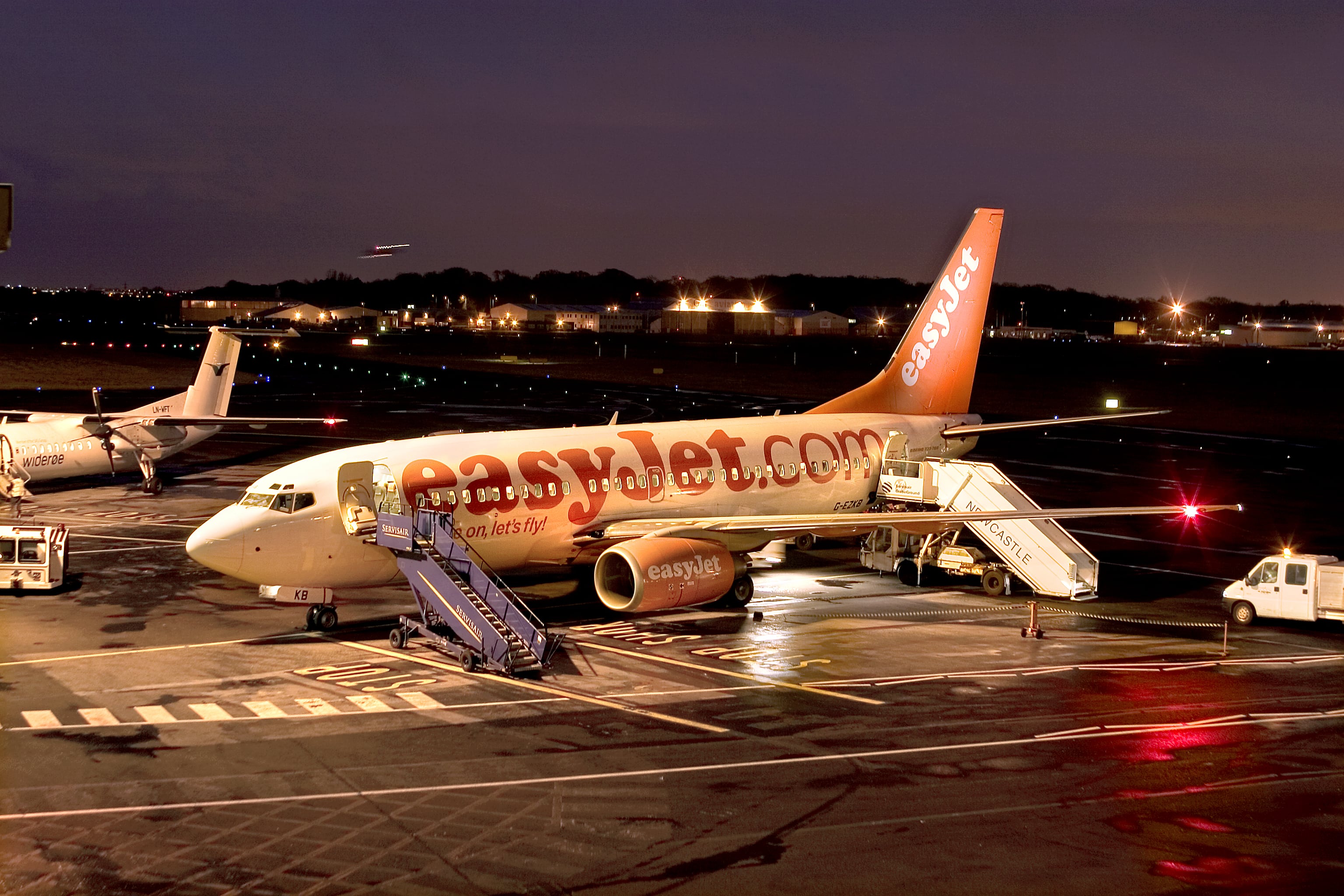
2010s
Emirates celebrated its 10th anniversary in 2017. The value of exports flown from the region has increased to £310m per annum, compared to less than £20m in 2007 prior to the launch of the Emirates service to Dubai.
Nick Jones joined the Airport in 2015, becoming Chief Executive in 2016, a role he still holds today.
In April 2019 Newcastle International launched a new inbound tourism website for the North East. The newly set up brand aims to increase the number of visitors to the region. The website is called Visit North East England.
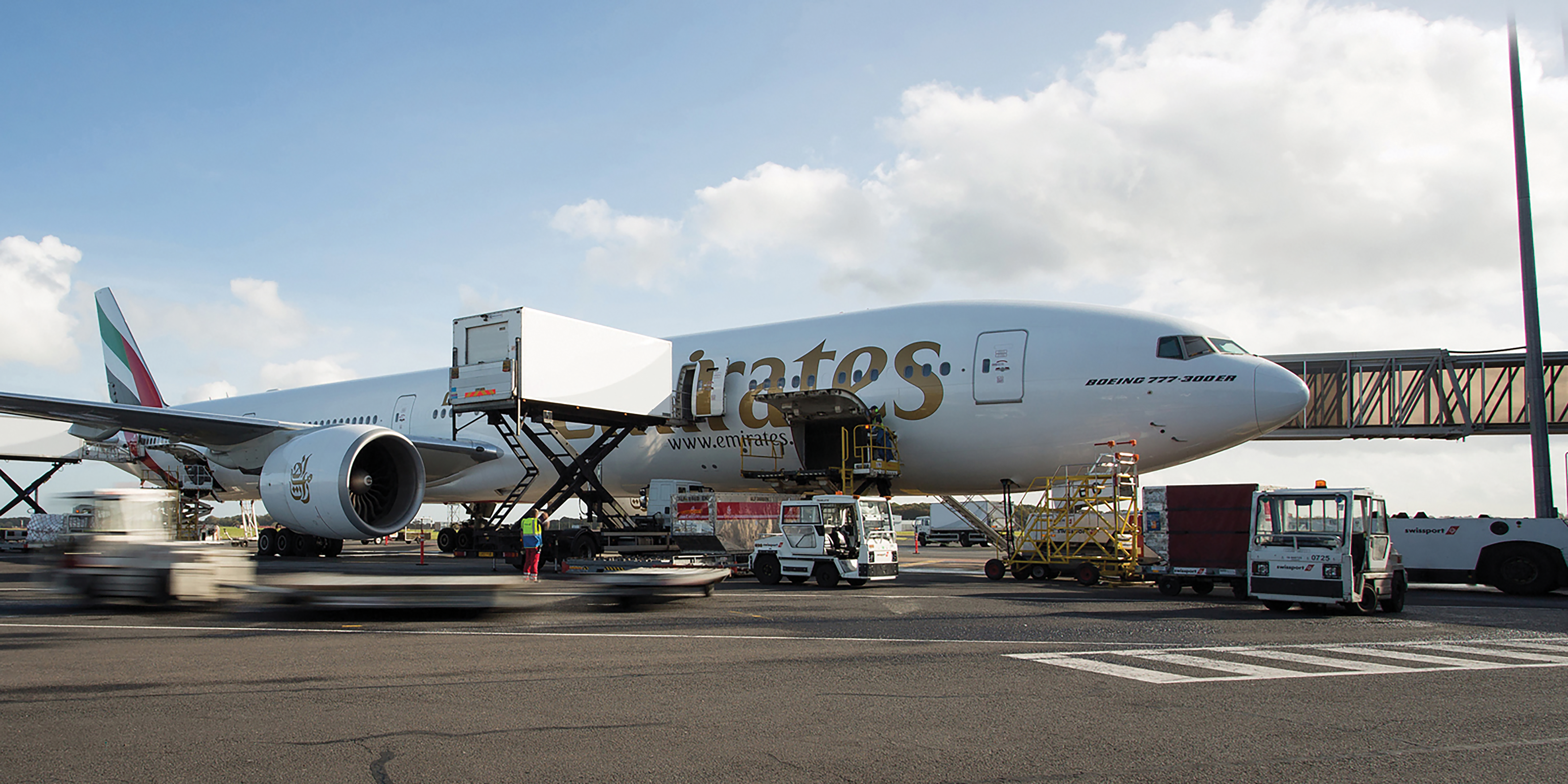
2020s
During the COVID-19 pandemic only a handful of essential flights depart from Newcastle Airport each week. Post pandemic, passenger numbers recover strongly.
Post-COVID the Airport commits to becoming Net Zero Carbon by the year 2035 and becomes the first Airport in the UK to purchase a fully electric airside bus.
The Airport is recognised as a leader in the field of sustainability and now has its own solar farm that provides 100% of its electricity on sunny days! It was opened in July 2023 by the Minister for Energy Efficiency and Green Finance, Lord Callahan.
Major investments come from Corendon, TUI, Jet2.com, easyJet and Ryanair and new airlines such as Norwegian, SunExpress and Blue Islands are welcomed.
The Airport is crowned ‘Best Airport in the World’ at the prestigious Routes World Conference in 2024.
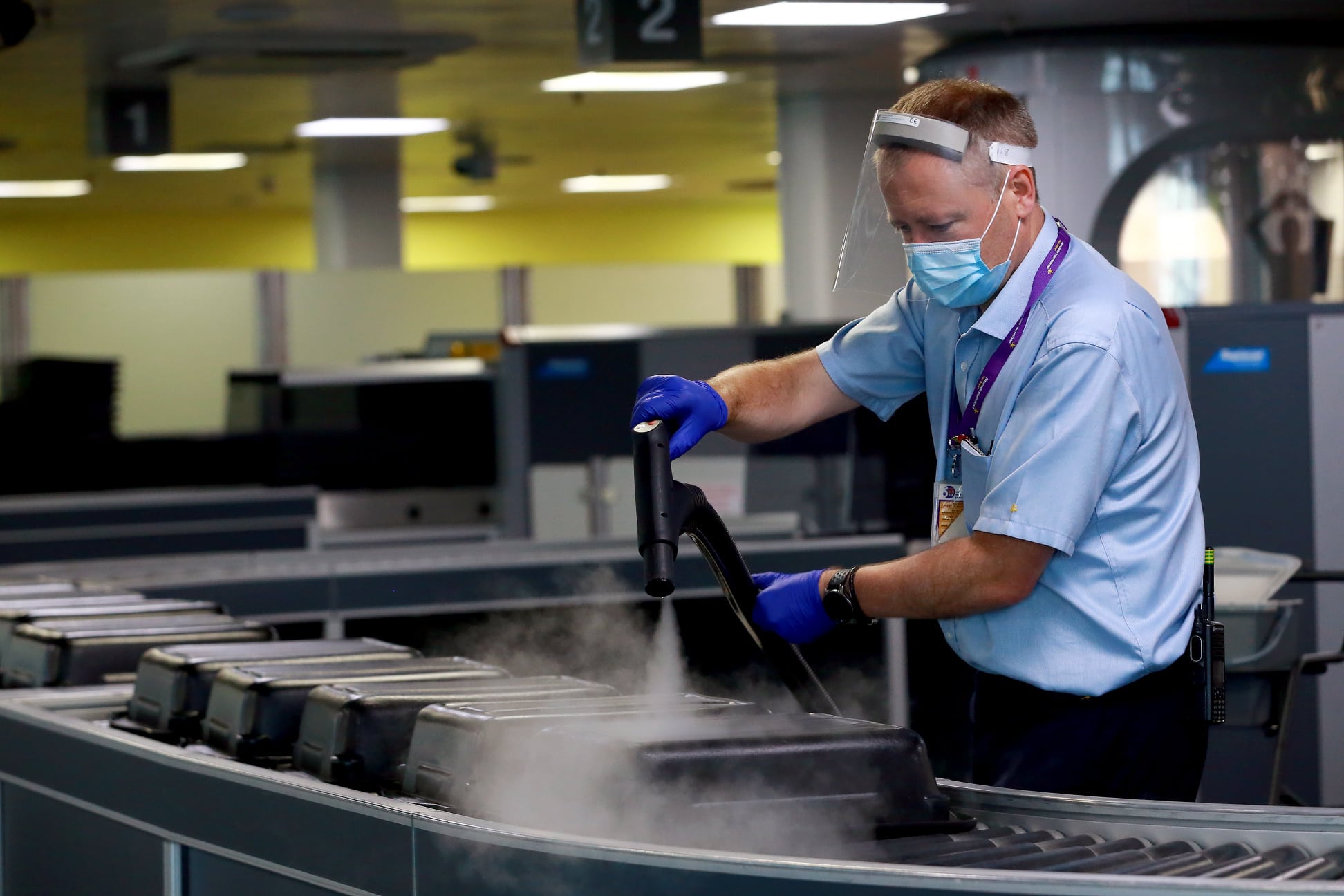
A Timeline of Airline Partnerships
1937
Allied Airways
The first scheduled international service, operated by Allied Airways, carried passengers between Newcastle and Stavanger. The flights also regularly carried Norwegian Airmail on the return journey.
1938
North Eastern Airways
Cleared for takeoff…! The first scheduled service by North Eastern Airways called into the North East on a flight between Croydon, in South London, and Perth, in Scotland.
1939 - 1947
The Airport was acquired by the RAF during WWII
1951
Hunting Clan Air Transport
Hunting Clan Air Transport initially connected Newcastle with London, by 1953 the airline had established several international European services from Newcastle including Dublin, Amsterdam and Dusseldorf.
1952
British Airways
BKS Air Transport began operating services from Newcastle in 1952. In 1959, BKS launched services from Newcastle to London Heathrow. BKS rebranded as Northeast Airlines in 1970, before merging with BEA, BOAC and Cambrian Airways to form British Airways in 1976.
Today British Airways is the Airport’s longest serving and largest scheduled carrier. The airline flies up to 34 times a week from Newcastle to London Heathrow and offers connections to hundreds of destinations worldwide.
1960
Dan-Air
Dan-Air was one of the largest airlines in Europe and the second biggest in the UK. The airline grew its route network from Newcastle to provide access to over 25 destinations, including Gatwick, Kristiansand and Bergen. Dan-Air was acquired by British Airways in 1992.
1963
TUI
Euravia Airlines began operating holiday flights to Alicante for package holiday company, Sky tours. Euravia later rebranded as Britannia Airways and Sky tours as Thomson Holidays. Britannia Airways rebranded as Thomsonfly in 2003, before rebranding again in 2008 to Thomson Airways. Thomson Airways and Thomson Holidays rebranded as TUI in 2017 – the name we know today!
1969
Gill Airways
Gill Airways, originally known as Gill Aviation, started operating from Newcastle Airport in June 1969. The airline was headquartered at Newcastle Airport and founded by Michael Gill. The airline initially focused on air taxi services, cargo and mail flights. In 1989, it was renamed Gillair when scheduled passenger flights were introduced, and then became Gill Airways in 1995. The airline also operated codeshare flights from Newcastle to Paris on behalf of Air France. The airline ceased operations in September 2001, after its principal financial support was withdrawn by their bank following the September 11th terrorist attacks.
1979
Balkan Holidays
Balkan Holidays operated packaged holidays to Bulgaria from the Airport between 1979 and 2025.
1984
KLM
The first foreign carrier to use the Airport for scheduled flights. KLM began operating 5 flights a week from Newcastle to Amsterdam in 1984; today the airline operates up to 35 flights a week to Amsterdam and beyond.
1987
TUI
Air2000 was established and started flying from various UK airports, including Newcastle, for their tour operator Owners Abroad. Owners Abroad later rebranded as First Choice Holidays and Air2000 later established a base at Newcastle Airport. Air2000 closed their base in 2001 after the events of September 11th 2001, however continue to fly ad hoc from Newcastle. Air2000 rebranded as First Choice Airways in 2004. Thomson Holidays and First Choice Holidays merged in 2007, which also resulted in Thomsonfly and First Choice Airways merging to form Thomson Airways. Thomson Airways rebranded as TUI in 2017.
1988
Air France
Air France began operating from Newcastle in 1988 and today flies up to three times a day to Paris Charles de Gaulle and beyond.
1993
Airtours / MyTravel Airways
Airtours International Airways established a base at Newcastle Airport operating for holiday company Airtours. Airtours International Airways rebranded as MyTravel Airways in 2002.
MyTravel Airways merged with Thomas Cook Airlines in 2008.
1998
Thomas Cook Airlines
The roots of Thomas Cook Airlines being based at Newcastle Airport date back to 1998. Flying Colours Airlines opened a base at Newcastle Airport in May 1998, operating holiday flights across Europe for their in-house package holiday company, Sunworld Holidays. In 1998, Thomas Cook acquired Sunworld Holidays, Flying Colours Airlines, Caledonian Airways and Inspirations Holidays and merged in 2000 to establish JMC Airlines and JMC Holidays. JMC was the initials of Thomas Cook’s son, John Mason Cook. JMC rebranded as Thomas Cook in 2003. Sadly, after many years of loyal service to holidaymakers in the North East of England, Thomas Cook collapsed into administration in September 2019.
2001
easyJet
A British low-cost airline, Go, founded by British Airways took over Gill Airways Stansted route at Newcastle in 2001.
Go was sold to easyJet in 2003 and the brand operates its first flight from the Airport.
easyJet has recently announced the opening of a new base at the Airport for 2026. This investment will support more than 1,300 jobs and add 11 new destinations to the existing 8 routes already served by the airline.

2001
Flybe
Launched in 1979 as Jersey European Airways, the airline was renamed Flybe in 2002, and at various points was the largest independent regional airline in Europe. Flybe grew its route network from Newcastle from 2001.
Flybe collapsed into administration in March 2020.
2003
Ryanair
Ryanair joins Newcastle as the Airport's second low cost operator. Growing from its first flight to Dublin in 2003 to operating to 18 destinations in 2025.
2005
Jet2.com
Leeds based airline, Jet2.com, opened its third UK base at Newcastle Airport in 2005. This year the airline will celebrate its 20th anniversary flying from Newcastle and currently offers flights and package holidays to over 50 destinations in 21 countries.
2007
Emirates
A groundbreaking moment for the Airport. The first scheduled long-haul service took off from Newcastle Airport in September 2007 to Dubai. Emirates celebrated a record breaking year in 2024, carrying over 250,000 passengers from the North East Airport to Dubai.
2013
Aer Lingus Regional
Aer Lingus Regional launches new services to Dublin from Newcastle Airport, with passengers travelling onto the USA benefitting from US Immigration pre-clearance in Dublin Airport.
2014
Eurowings
Germanwings, a budget airline of the Lufthansa Group, began operating from Newcastle Airport in 2014 with flights to Dusseldorf. The airline rebranded as Eurowings in 2015. In 2024, Eurowings announced a new route to Berlin, which began operating in early 2025.
2019
Loganair
The UK’s largest regional airline, Loganair, begins operating a number of routes from Newcastle Airport, including Exeter, Newquay, Southampton, Bergen and Stavanger - providing connectivity for both business and leisure passengers
2020
Lufthansa
Lufthansa joined Newcastle Airport in February 2020 with a new flight to Munich, although the service lasted only 7 weeks due to the global lockdown and COVID-19 pandemic from March 2020. The airline resumes services from Newcastle in 2021, with a new flight to Frankfurt.
2022
Corendon
An increased appetite for holidays to Turkey saw Turkish airline, Corendon, join the Airport providing new summer flights to Antalya and Dalaman.
2023
SunExpress
In 2023, SunExpress – a joint venture between Lufthansa and Turkish Airlines, launched a new route to Dalaman from the Airport.
2025
Blue Islands & Norwegian
Two more airlines join the Airport, bringing the total number of airline partners to 16. Norwegian launched new flights to Copenhagen and Blue Islands added new routes to Jersey and Guernsey.
2026
Further growth is in the pipeline for 2026, with an additional based aircraft from Jet2.com bringing new routes to Porto, Preveza, Palermo, Barcelona and Agadir. easyJet’s investment in a new base will also bring 11 new routes from the airline, including to Nice and Malta.
Join our Journey
With 20 different departments and over 120 rewarding job roles - the career opportunities are endless. Join one of the North-East’s largest employers and build a rewarding career in a fast-paced, people-focused environment.
Why join our team?
Be part of one of the North-East’s largest employers, supporting over 3,200 onsite jobs.
Work in a fast-paced, dynamic environment where no two days are the same.
Benefit from excellent training, development, and progression opportunities.
Join a supportive, friendly team that takes pride in connecting the region with the world.
